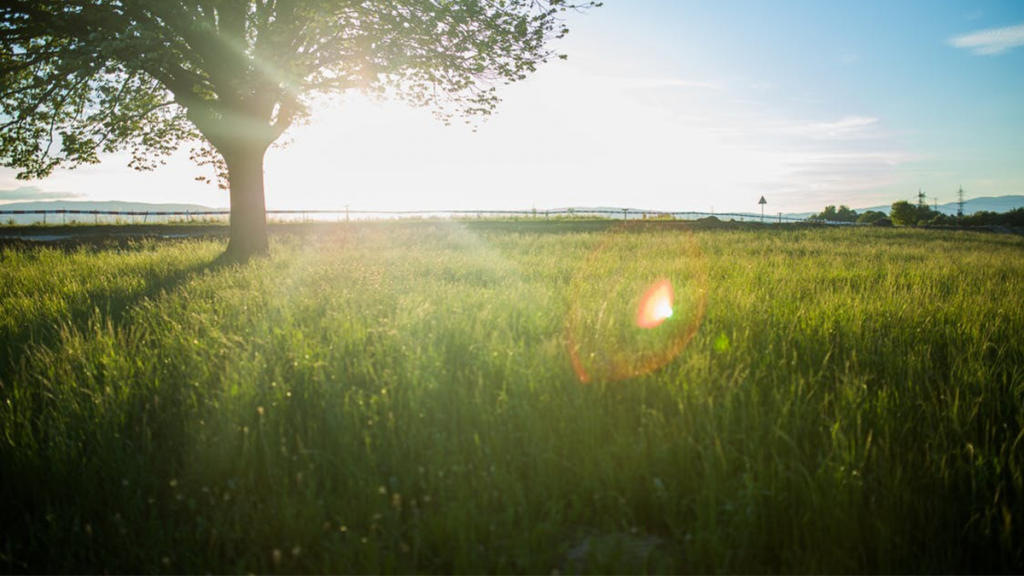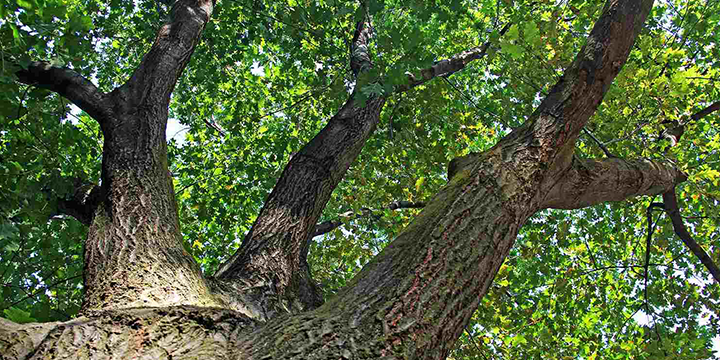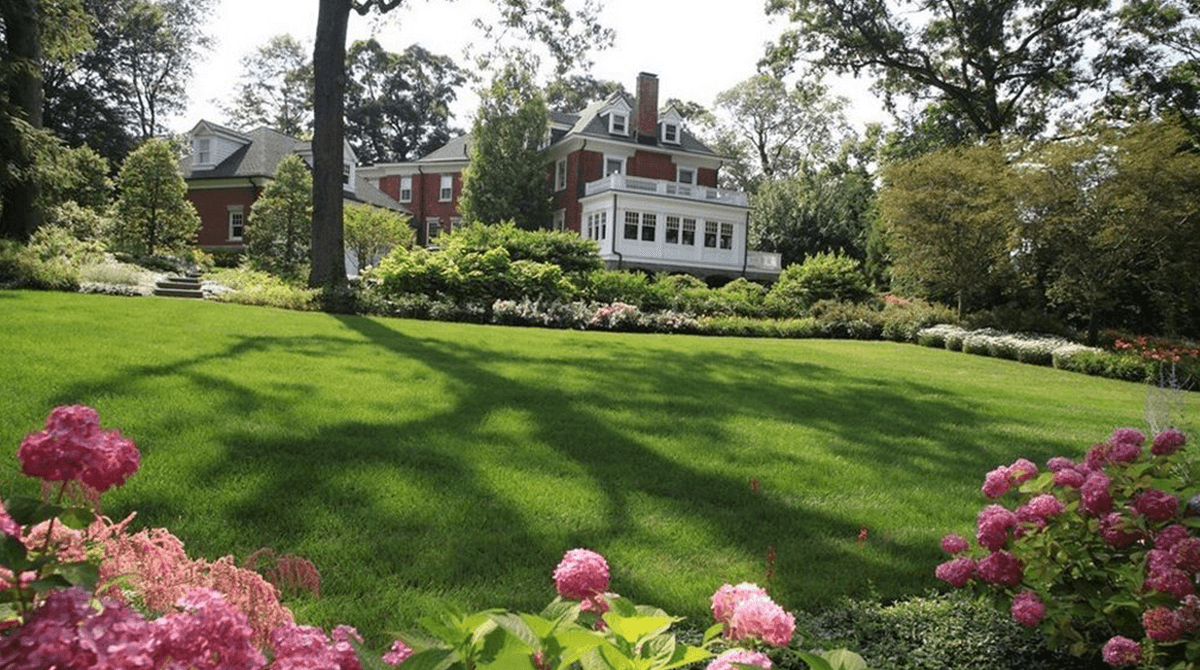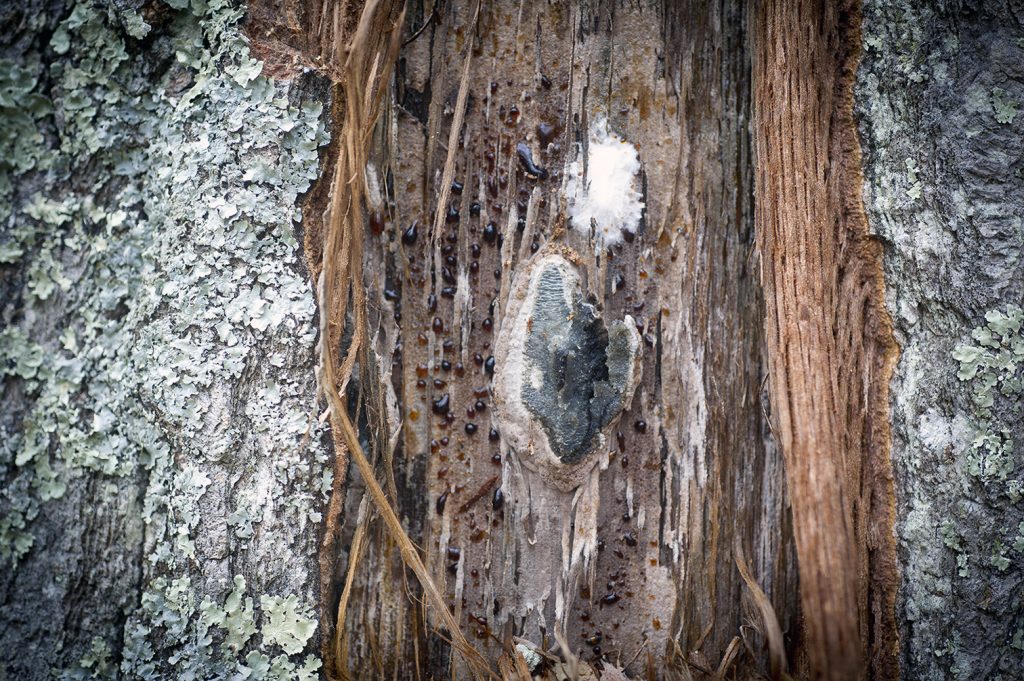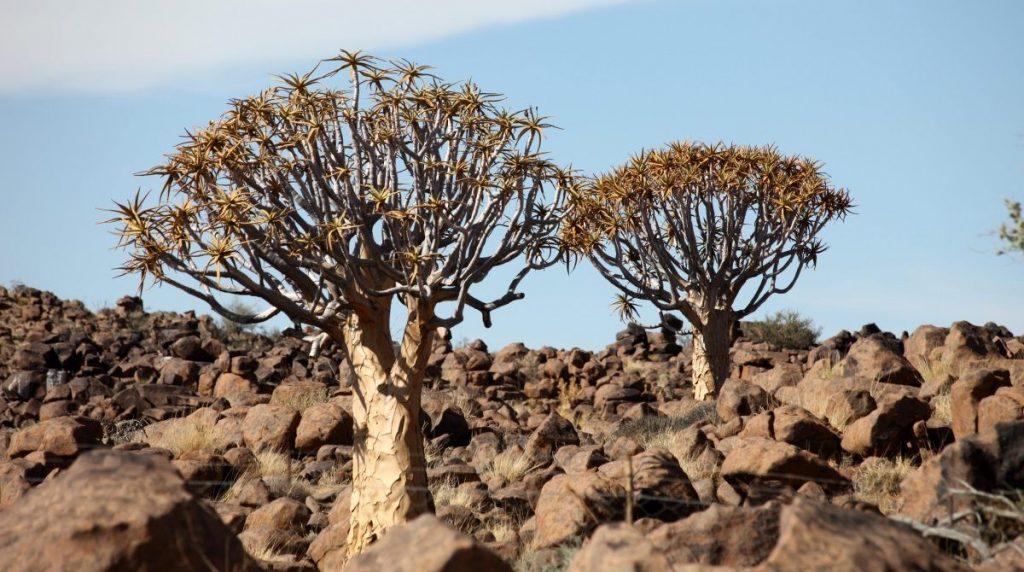
Date August 10, 2021
Category
Although we see milder temperatures and more rain than we usually do in Texas by this time, the hottest and driest part of the year is still ahead. Below are some tips to help you and your yard with weather periods of drought and extreme heat that could be coming our way in 2021. Here’s what you need to know about the effects of drought on landscape trees and how to handle it.
What happens to trees and shrubs during a drought?
Periods of prolonged heat and drought have a serious effect on our trees and other woody landscape plants. Some trees are affected more than others, but it’s important to monitor the health of all the trees and shrubs on your property. Trees need a steady diet of water and nutrients to survive, and they get both of those things from the soil. They absorb them through their root systems with the help of tiny tubular absorbent outgrowths on the roots called “root hairs.” Trees carry the nutrient-rich water up through the tree and into the tree’s leaves. During long periods of extreme heat and drought, the amount of moisture in the soil declines. Some soils will even “hold” the moisture in and make it unavailable to the trees and plants. In either case, when the trees cannot get the water and nutrients they need, their fine root hairs begin to die. During periods of extreme drought, even the primary roots will begin to decline in health. Once that happens, it becomes difficult for the tree to absorb water and nutrients even once the rain returns because the root hairs need to be regrown, taking several weeks. As you can probably imagine, root decline leads to serious stress for the tree, and when trees are stressed, they become far more vulnerable to attacks by harmful insects and diseases.
How to tell when your trees are showing signs of drought-related stress?
During the summer months, when temperatures are high and precipitation events are few and far between, you should monitor the health of your trees. There are a few signs of decline you should look out for to determine if your trees are experiencing drought-related stress:
- Wilting – There are two types of wilting to look out for: temporary wilting and permanent wilting. You can tell if wilting is temporary if the leaves droop during the day but recover at night and appear healthy in the morning. If a tree’s leaves are wilted in the morning, you might be dealing with permanent wilting.
- Chlorosis (“Yellowing of Leaves”) – If your tree’s leaves prematurely turn yellow, that’s a sign that your trees are suffering. Typically, Chlorosis is caused by a lack of iron. However, sometimes the problem is not that there’s a lack of iron available in the soil, but rather that the tree cannot access the iron because of a lack of water.
- Leaf scorch – This is when your tree’s leaves start to turn brown and look burnt or “scorched” at the margin. This condition is generally seen during the summer when water is scarce because a lack of water or nutrients usually causes it.
- Defoliation/Early leaf drop – If your tree starts dropping its leaves early, especially if it starts at the ends of the branches and moves inwards, that’s a sign your tree is stressed and needs help.
- Bark cracking – Certain trees are more prone to this, but sometimes, the bark on a tree will crack during extreme weather events like prolonged drought.
- Twig dieback – If the drought conditions persist, you might notice the branches on your tree begin to wilt and die, starting at the ends of the branches and moving inwards.
- Secondary issues – Trees that are stressed are susceptible to secondary issues that could cause severe or even fatal damage to trees, so if you’ve noticed any of the symptoms mentioned above, you should also be on the lookout for signs of pest infestations, diseases, and fungus.
Watering guidelines for North Texas trees
Trees and shrubs native to Texas are more accustomed to our summer and fall weather, but even those trees need to be monitored. Trees that aren’t native to Texas might need a little extra help getting through the hottest and driest parts of the year, as will all young trees. Here are some guidelines for supplemental watering to help you keep your landscape trees at optimal health:
- If you have young or newly planted trees, keep in mind that they will need a lot of water to kick start their lives. The first three years are the most critical. You need to keep the soil moist but not water-logged.
- As a general rule, a young tree should get ten gallons of supplemental water per week per caliper inch during the summer (but only five gallons during the rest of the year). To determine the caliper inch, measure the diameter of the trunk six inches from the ground.
- For young trees, water the root ball and just beyond.
- Water the area under the canopy for mature trees, extending a few feet beyond the dripline, the outermost circumference of the tree’s canopy. Do not focus the water at the tree’s base, as most of the tree’s root hairs are located a few feet away from the tree’s trunk.
- Plan to water your trees twice a week to give the soil time to dry between watering. We suggest every Monday and Thursday.
- If your soil drains quickly, it will require more frequent watering. To check the drainage, check the soil at six inches below the surface and water when it’s dry.
- The best way to water your trees is with a soaker hose or a drip irrigation system. The best time to water is at night or early in the morning to reduce evaporation loss.
- Using proper mulching techniques will help keep moisture in the soil for longer.
Soil conditioning to enhance root hair growth and boost overall health
TreeNewal offers a special blend that we highly recommend to all our customers to boost their health and better withstand drought and other adverse weather conditions. TreeNewal developed it with three products proven to increase the growth and vitality of your trees and shrubs. This blend is beneficial for all trees and shrubs, but it’s beneficial for trees experiencing stress. Our blend uses the biochar brand VITAL Blend 5M, a plant-derived, organic soil enhancement product that charges the soil. The blend also includes humic and fulvic acids, high amounts of Active Carbon, and over 55 micronutrients which improve your tree’s metabolism, nutrient intake, and development. The biochar and humic acid are beneficial in remediating compacted soils.
Remember those root hairs we mentioned earlier, the ones that are responsible for a tree’s ability to soak up nutrients and water from the soil? Root hairs typically only live two to three weeks before they die off and are replaced by new growth. Stress can significantly reduce or even destroy root hair growth and development. To address this problem, our blend also includes MitoGrow, a rooting hormone; to stimulate and promote root hair growth in your trees and shrubs.
This time-tested blend is a natural plant growth stimulator designed to boost your tree’s ability to absorb nutrients and develop a deeper, stronger root system, bark, and canopies.
TreeNewal’s ISA Certified Arborists can help with your summer tree care.
If you have questions or concerns regarding drought and landscape trees, TreeNewal’s ISA Certified Arborists are available to visit your property to assess your landscape and determine a tree health care plan that’s customized to fit your specific needs. TreeNewal is a certified arborist tree service with multiple ISA Certified Arborists on staff and a team of highly qualified tree care experts. If you need professional tree care, our tree doctors in Dallas are the best in the business. They can make knowledgeable recommendations for optimizing your tree’s health. We care about tree health care at all stages of the tree life cycle and are experts on both young and mature trees. We offer a full range of expert tree care services, such as tree trimming, tree pruning, pest and disease control, root aeration, and tree removal. For more information about our tree care services, go to our website at treenewal.com. To set up an appointment, call us at tel:(817) 592-6846.
To learn more about The Effects of Drought on Landscape Trees and How to Handle It, TX, call our Argyle and Southlake-based teams
at tel:(817) 592-6846 or send us a message.
We’re a little different than the average tree services company.
Learn more about TreeNewal’s ISA Certified Arborists!
Our Dallas/Fort Worth-based tree doctors can explain how sustainable tree care services add more value to your bottom line.
Healthy trees, healthy lives.
